100 Attempts at Drawing a Square
(with Eyes Closed)
A collection of 100 1/1 Analog Generative Art NFT’s of attempted squares drawn with eyes closed.
This project began as a book created in 2007. The basis is exactly what is described in the title. It is a collection of 100 attempts at drawing a square with eyes closed. The core of the book was an analysis of each image, describing the traits of that particular “square”, patterns and repetitions of traits (ie. an opening in the top left corner, where the drawing began and ended), and an exploration of the degrees of complexity that could be derived from a simple uniformly framed concept. The book remained unpublished and wrapped in brown paper for the past 15 years. It was never officially published because the form of the “book” never felt right. However, with the invention of the NFT, the original elements of the book’s key expressions and analyses are more suited than ever. This is a collection of 100 images within a shared realm of conceit. There is no “randomness” on a computational level, but there is a good degree of incalculable randomness in the human hand, drawing without looking. Patterns emerge from this, yielding repeated traits, unique one of a kind expressions, and clear derivations from the norm that still fall under the umbrella of the collection as a whole. The “generative” component of the project is simply a product of limiting the sensory input for creating the images. The project was built from completely analog components: paper, ink, human fallibility; but was clearly always meant to live on the blockchain as a digital artifact of revealing complexity within a very simple frame.
#053
Definitions & Descriptions (Excerpt from original book)
For the sake of direction, and to put confusion in a fairly numb place: By “SQUARE” we will refer primarily to that of the regular polygon in Euclidean geometry. This is not to disregard the body of possibilities excited from the word, nor is there any intention of closing doors. Let us take meta~ into consideration; an organization of an organized shape in an organizing language. Perhaps the intent is to make aware the quietly complex faults of our regular systems, but let it be known that we aim to dissect the how through the what, accepting any whys as arbitrary variables of process. Prior to exhibiting this, it is necessary to note the circumstances with which it will proceed.
The What of the What
Our SQUARE shall be defined as all/any of the following:
A closed object (as defined by its external boundaries, occupying a part of space located in/on a flat surface existing in its own right) composed of a finite sequence of objects (which exist in zero dimensions, contain no information beyond their being, and are represented in two dimensional space as an ordered pair of numbers assigned by a coordinate system—being an organization of functions on/from that space to its quantity which is independent of perspective—denoted as x,y), which form idealized objects (containing no width/height and are limited to no deviation from a singular limiting parameter) bounded by two ends of the sequence of objects; which exists in four equal instances with equal differentiations (as defined by an amount of rotation on the flat surface, separating the object-sequences from one another) of 90degrees (as defined by a quantity of units—being 1/360—probably because there are approximately 360 days in a year {units of units of organizing organizations} and it is readily divisible enough to accept a fault {7 is not a divisor but 1-6, 8, 9, 10 are} for the sake of convenience {2520 would be the necessary constant}] of a full rotation [beginning to end, end to beginning, beginning to beginning, end to end]).
A plane figure bounded by a closed path, composed of a sequence of four line segments with equal length, having all congruent angles.
An equilateral and equiangular polygon having four sides and four right angles.
An idealized object composed of a sequence of objects which form idealized objects that define themselves on an abstract object which exists as an object of organizing objects in a language of objects representing objects.
The standard shape of a pixel, being the “picture-element” used to compose the visualization that makes the creation and duplication of this analysis possible.
The approximate form of this book, when closed. The form of the .jpg of each image in this project.
1:1 Aspect Ratio
Our ONE HUNDRED shall be defined as all/any of the following:
A mathematical object (used in counting and measuring, notated by representations/symbols-- numerals/numbers) existing in a system (known as ‘base-ten’-- decided upon by the relationship of humans to the fingers on their hands, containing the digits 0, 1, 2, 3, 4, 5, 6, 7, 8, 9; wherein the rightmost digit in a sequence of numerals has a place value of singularity [one] and every other digit has a place-value which is multiplied by the base-value [ten] times that of the digit to its right), and composed of 1-0-0 (in that order).
100
10² (The “square” [not necessarily “Our SQUARE” though] of 10)
√10000 (The “square root” of 10,000)
10 x 10
An object (which can be expressed as a part of a system declared by itself as the base) reflected upon itself, becoming a larger object.
A sum, realizing that its parts are their own sums, which it is also a part of, looking into a mirror and becoming a version of itself which is self-aware, gaining value(s) in the process.
The idealized “singular whole” of a system (used to express how large one quantity is, relative to another quantity; using a number followed by the symbol “%”) commonly practiced (often to denote arbitrary values in fields that require no empirical evidence).
Our DEFINITIONS shall be defined as all/any of the following:
Statements conveying fundamental character.
Approaches to the idea of truth.
Inquiries, Propositions, Positions, Directions, Examinations
(?) > (.)
(?) + (.)
(?) = (.)
“hm?” / “huh?” / “uhh?” / “well—“ / “but—“ / “or—“ / “and—“
this / that / these / those
Statements?
Answers.
Answers.
The What itself.
The What itself, as what?
“…”
QUESTIONS
Only (all above options, multiplied by zero) QUESTIONS.
The Embrace of Hypocrisy (Why Not “Why”?)
Because why?
Generative System Specifications
Autonomous System: Brain
Primary Structure: Cerebrum, Cerebellum, Brainstem
Primary Process: Neurotransmission
Power: ~10w
Function: Frontal Lobe Motor Control, Attentional Control, Cognitive Inhibition
Functional Limit: Blocked Sensory Input to Occipital Lobe
Regulation: Autonomic Functions normal
Primary Output/Input Device: Hand
Secondary Output/Input Device: Pen
Recording Medium: Paper, Ink
Collection Properties
This list of properties was realized after recognizing patterns in the attempts after all 100 were completed.
Ink Blots: A welling of ink formed by a moment of trepidation or punctation (by number) *
Openings: Revealed when the square is incomplete, an open shape. (by number)
Crosses: Line segments of attempted square are intersecting, an overshot. (by number)
Hangers: Formed when the attempted square is overshot, but not forming a cross. (y/n) **
Dangle: Formed when there is an open intersection, consciousness of a possible opening, then attempted to be closed. (y/n)
Stroke Error: Errant marks, usually a result of not knowing distance between pen and paper due to blinded view, or a cautious/frivolous hand. (y/n)
Scale Error: Attempted square goes off paper. (y/n)
Unique: Attempted square is a break from the above patterns, or not even attempted at all. (name designation)
* Ink Blot numbers are determined by eye. There is subjective discernment in degree of trepidation and relative sizing factored in to determining this characteristic. Sometimes a corner or end of a line segment has a minor welling of ink that isn’t regarded as a full blot.
** In rare instances, a minor Cross is formed and a Hanger is still indicated if the relative line segment length feels more like a hanger than a cross (the cross indication still remains)
The Attempts

001

002

003
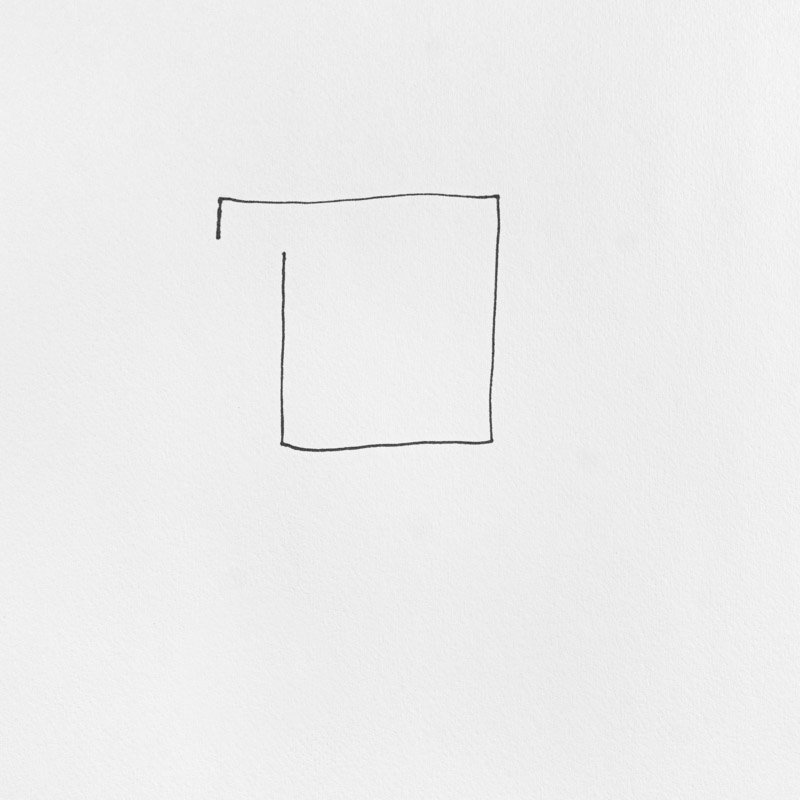
004
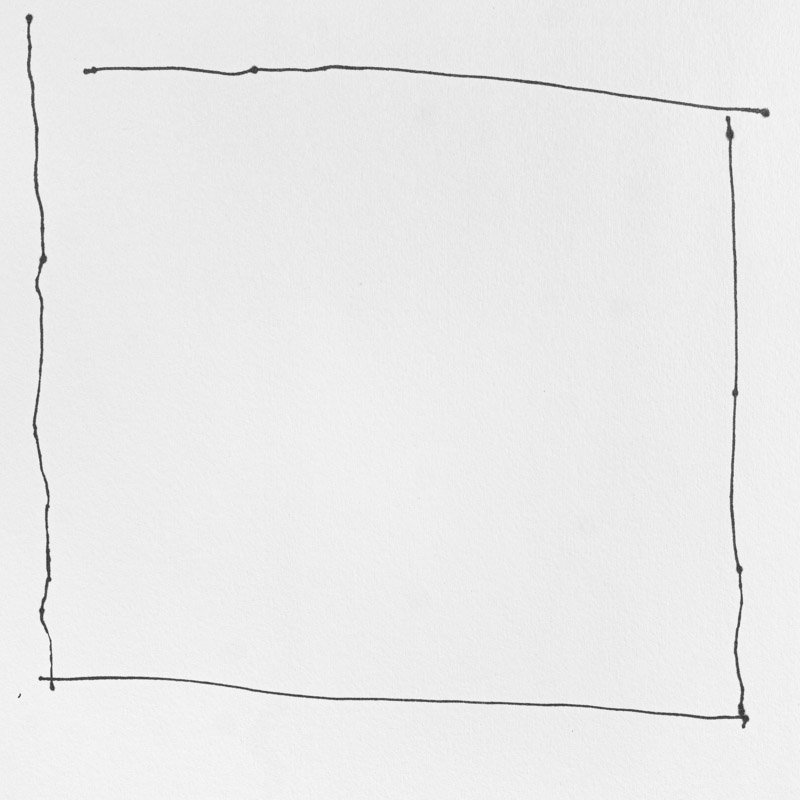
005

006

007
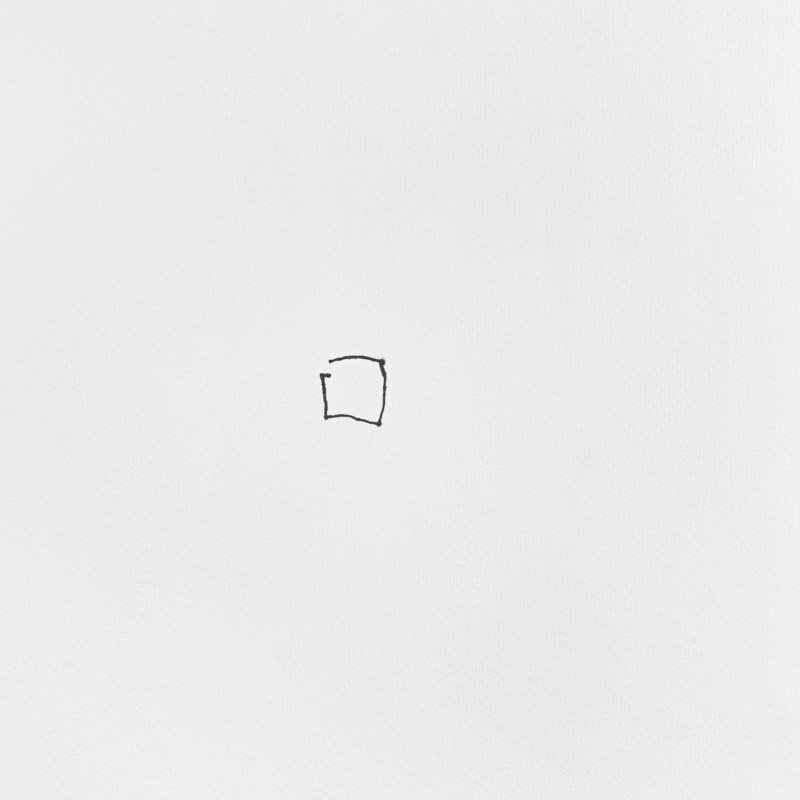
008

009

010

011
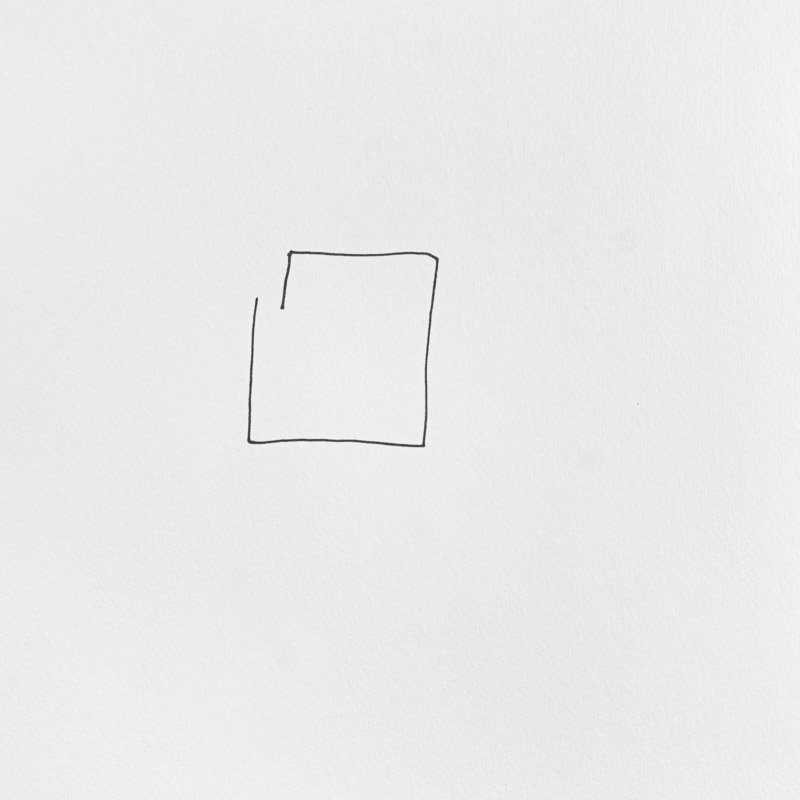
012

013
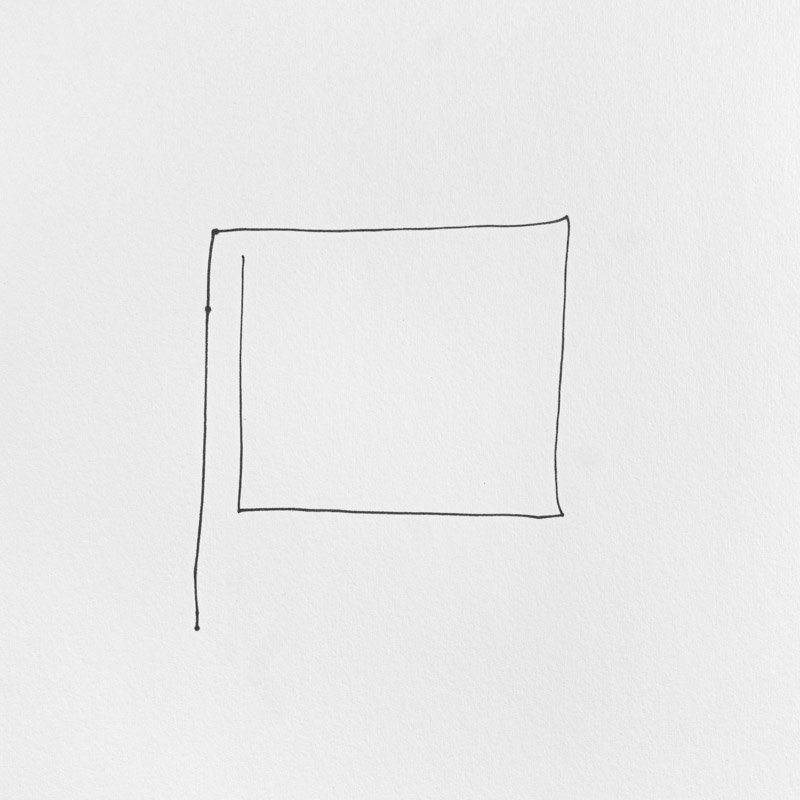
014

015

016

017
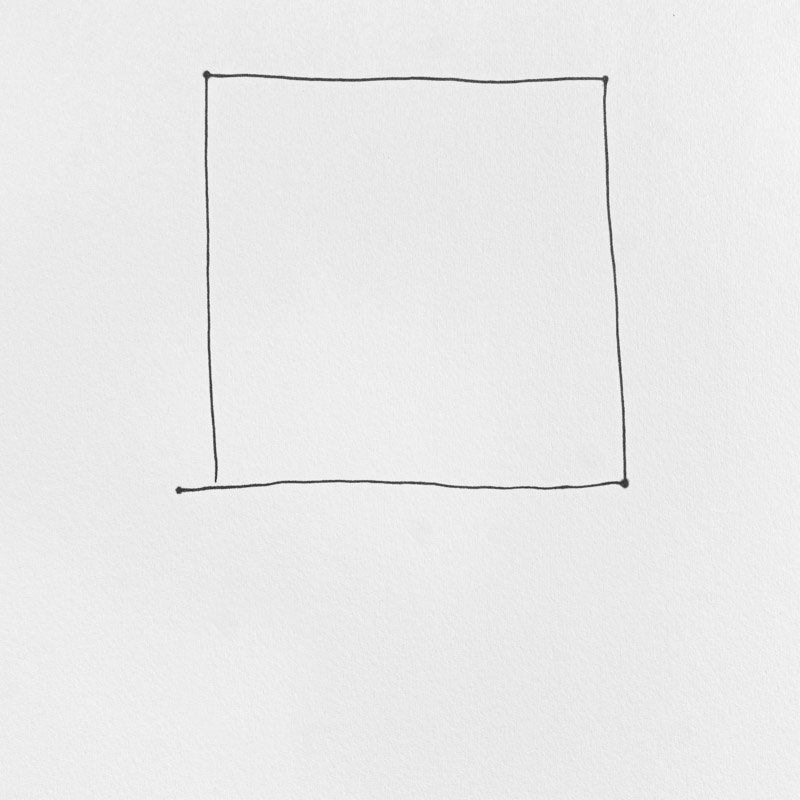
018
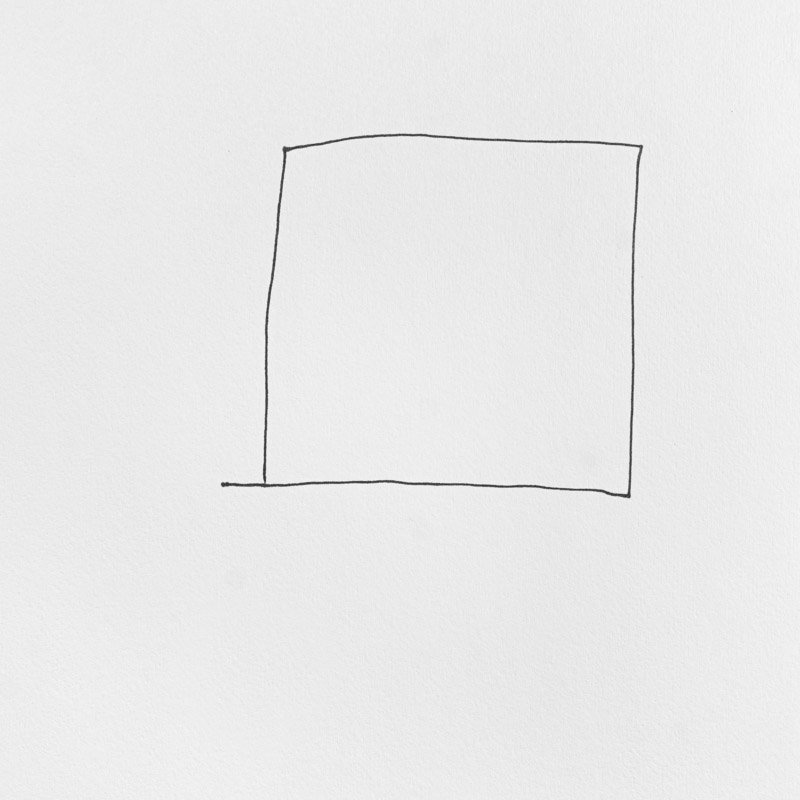
019

020
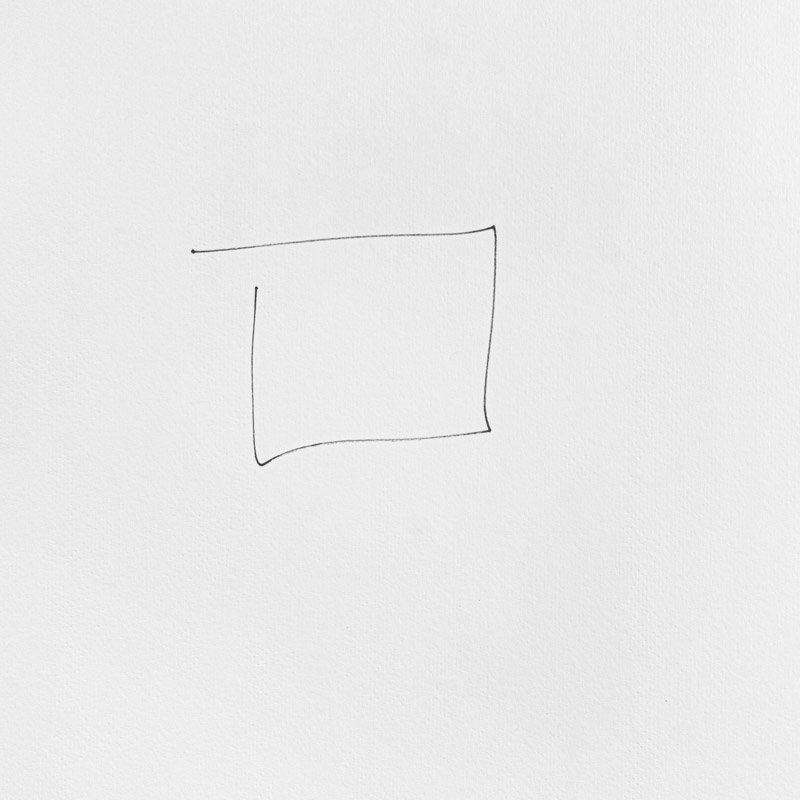
021

022

023
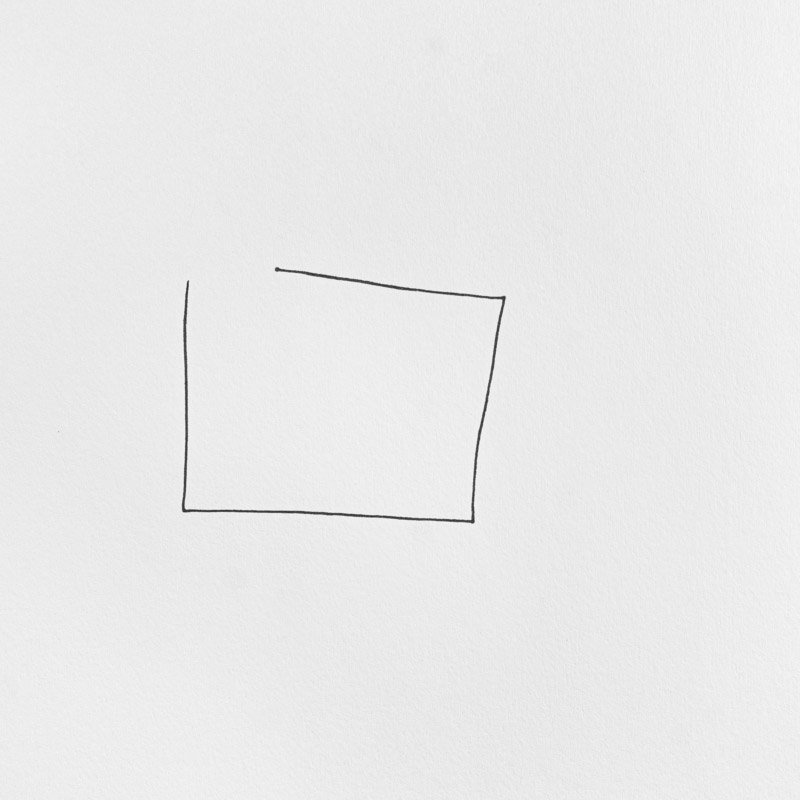
024

025
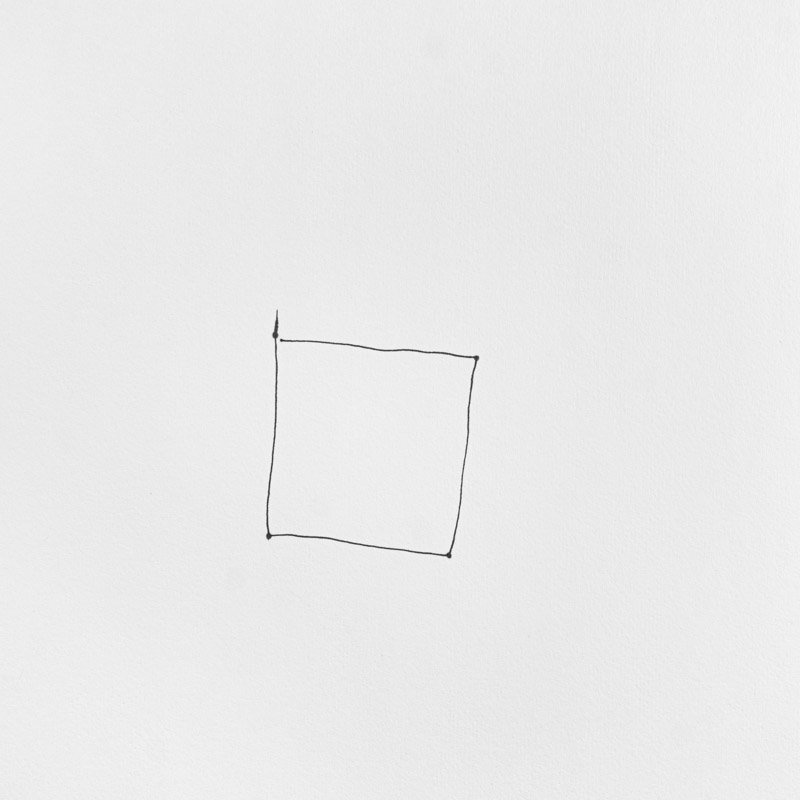
026
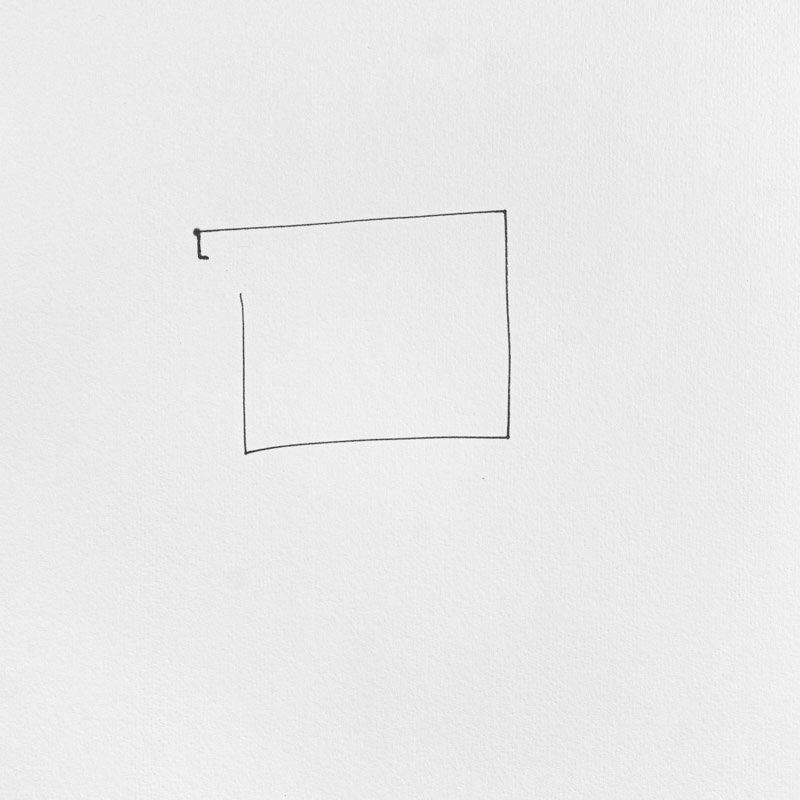
027

028

029

030

031

032
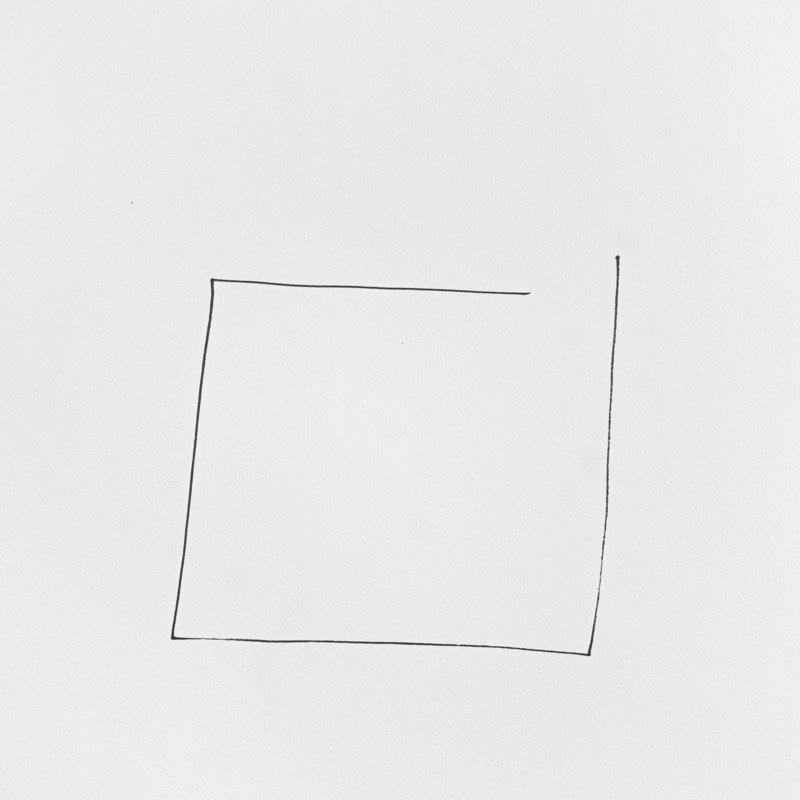
033

034

035

036
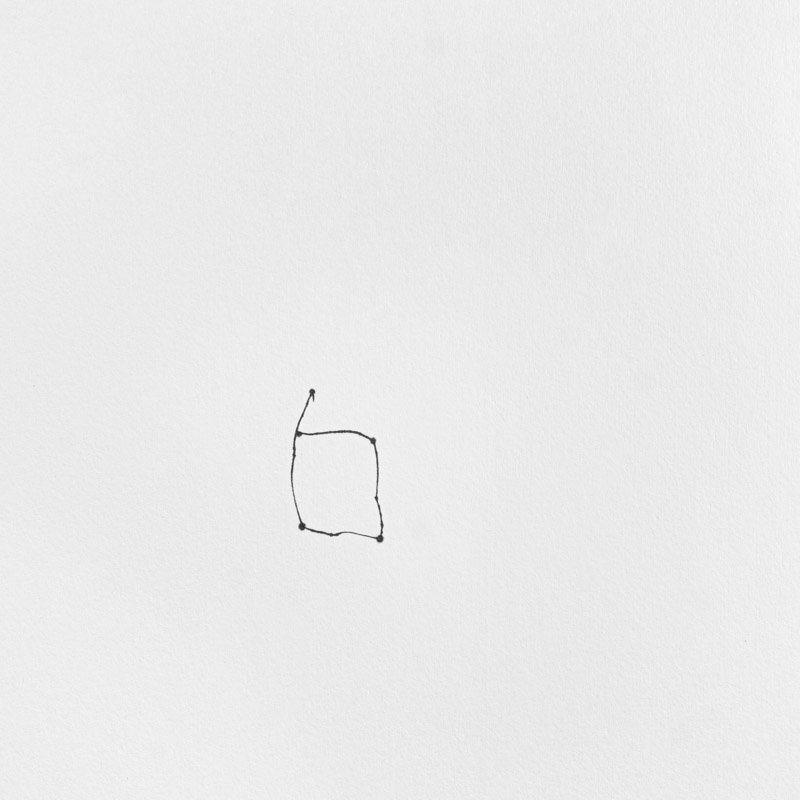
037

038

039

040

041

042
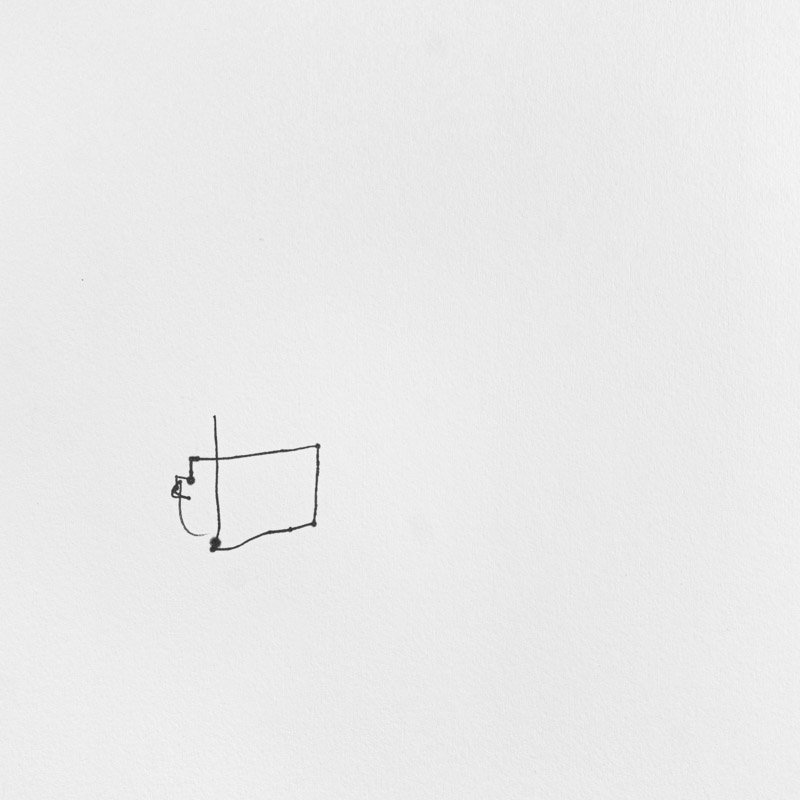
043 - "Confusion"
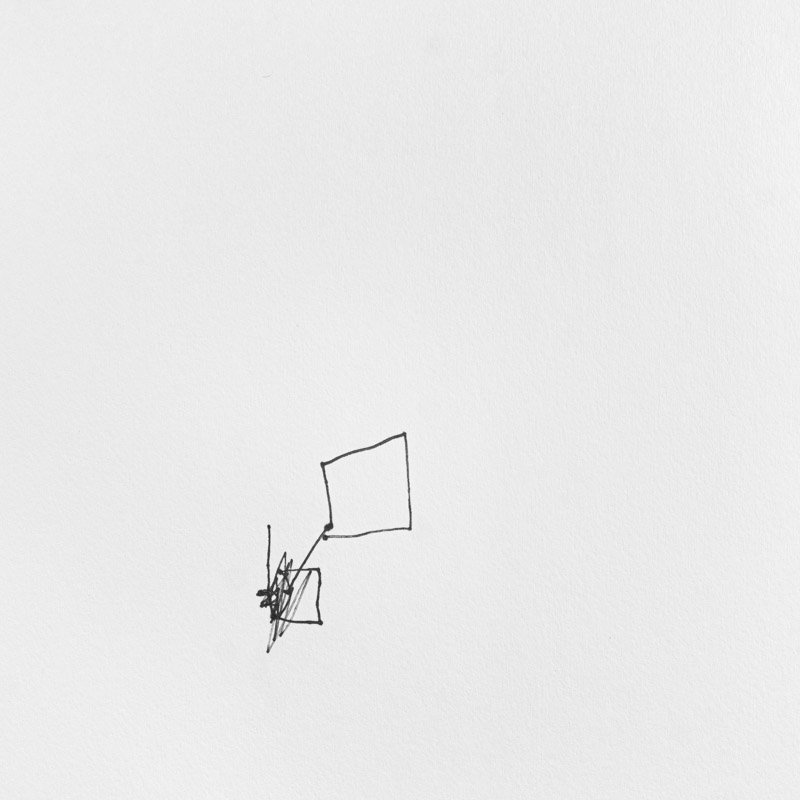
044 - "Try Again"
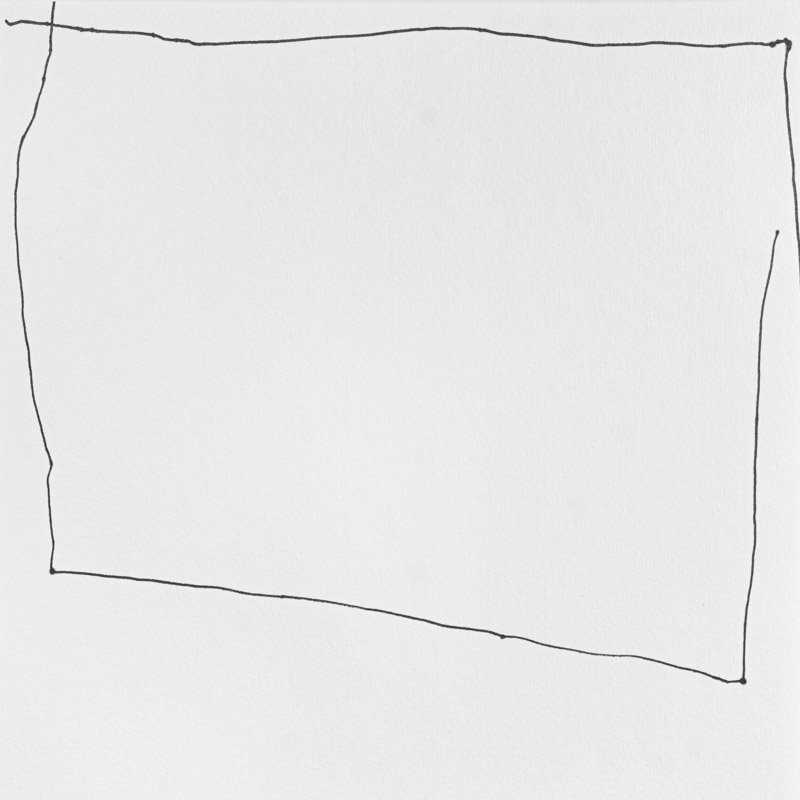
045
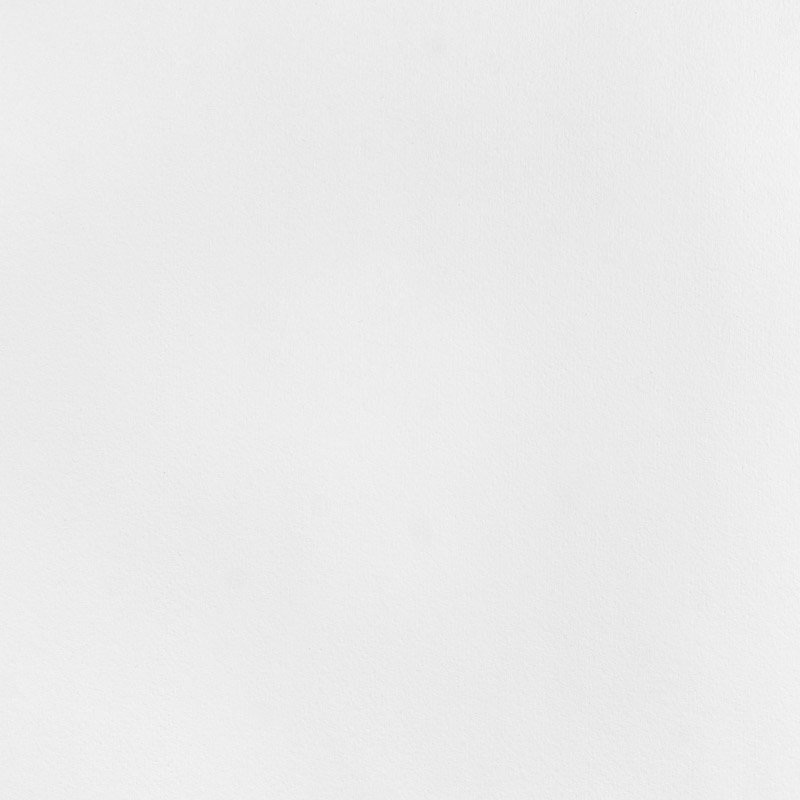
046 - "Nowhere"

047 - "Uncommitted"

048 - "Circle"
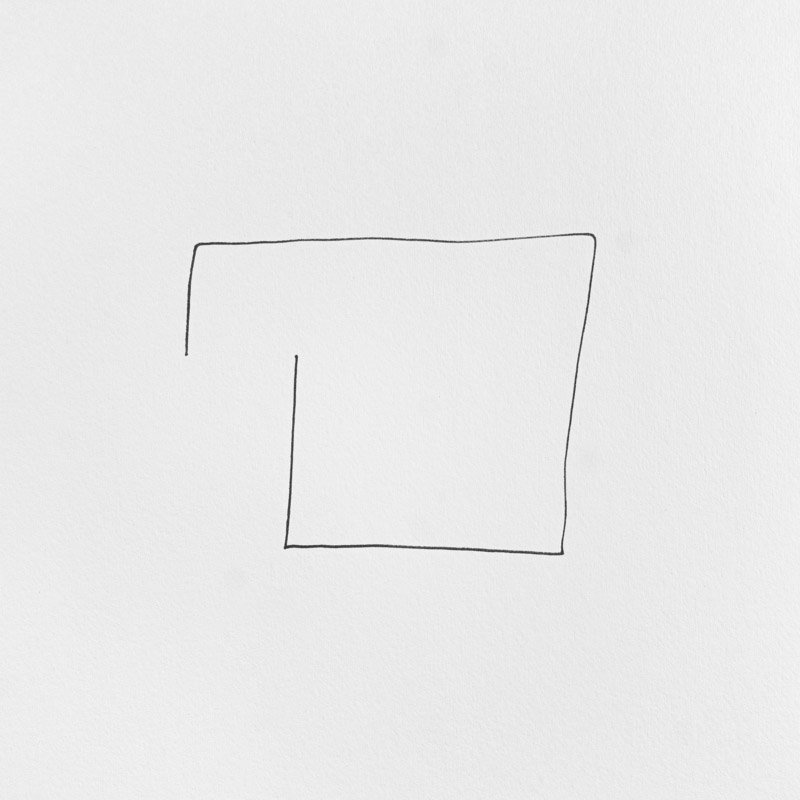
049

050 - "Incomplete Existence"
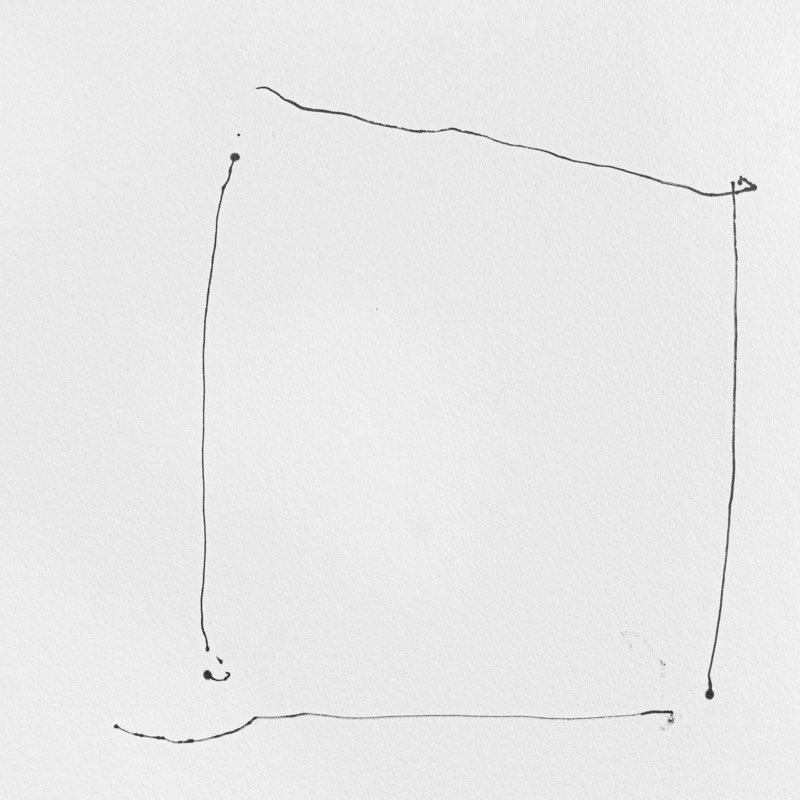
051

052
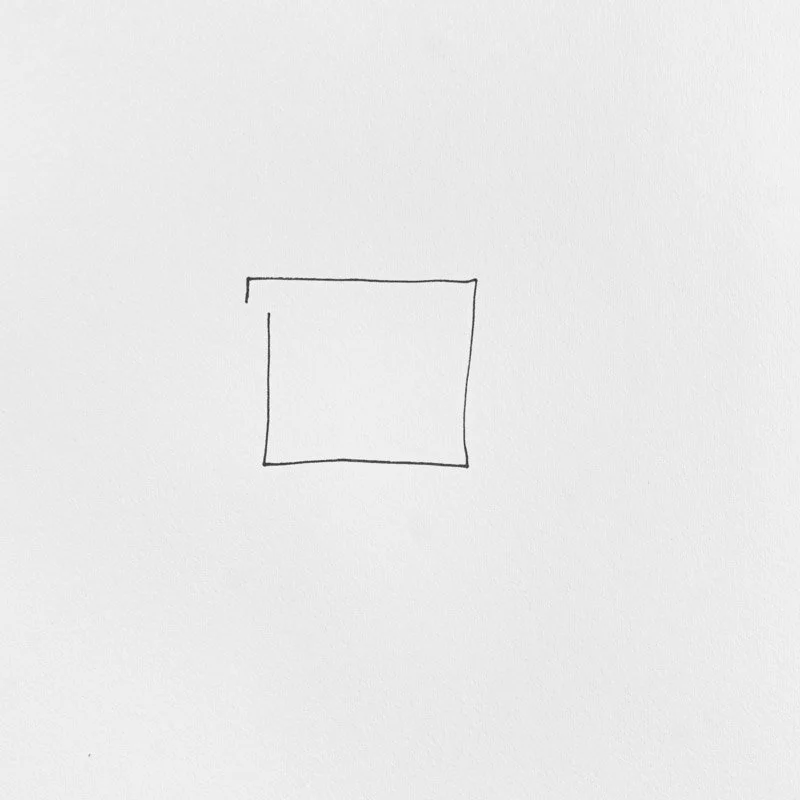
053

054

055

056

057

058
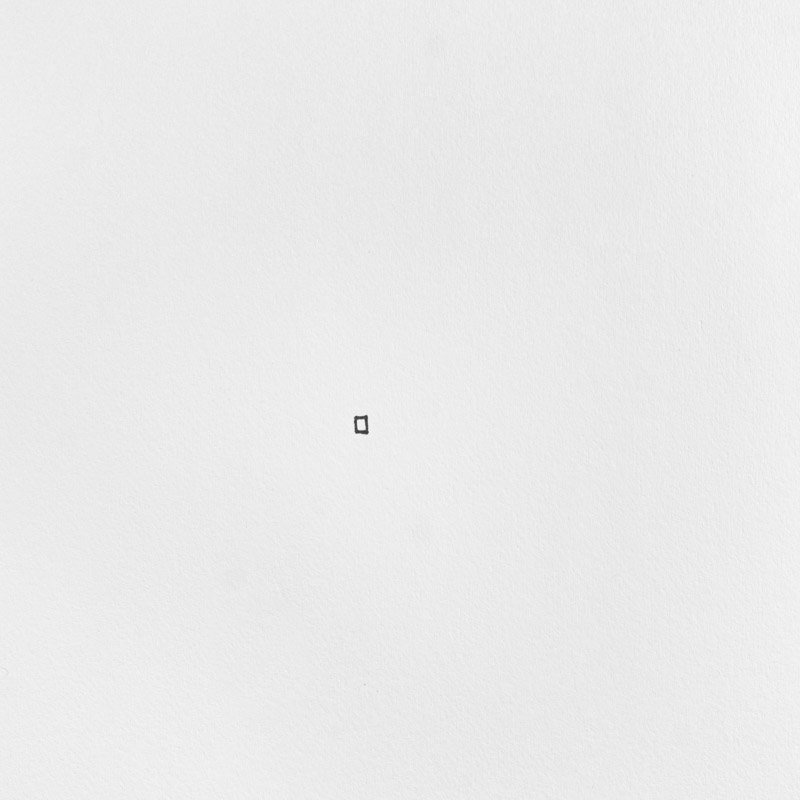
059

060

061

062

063
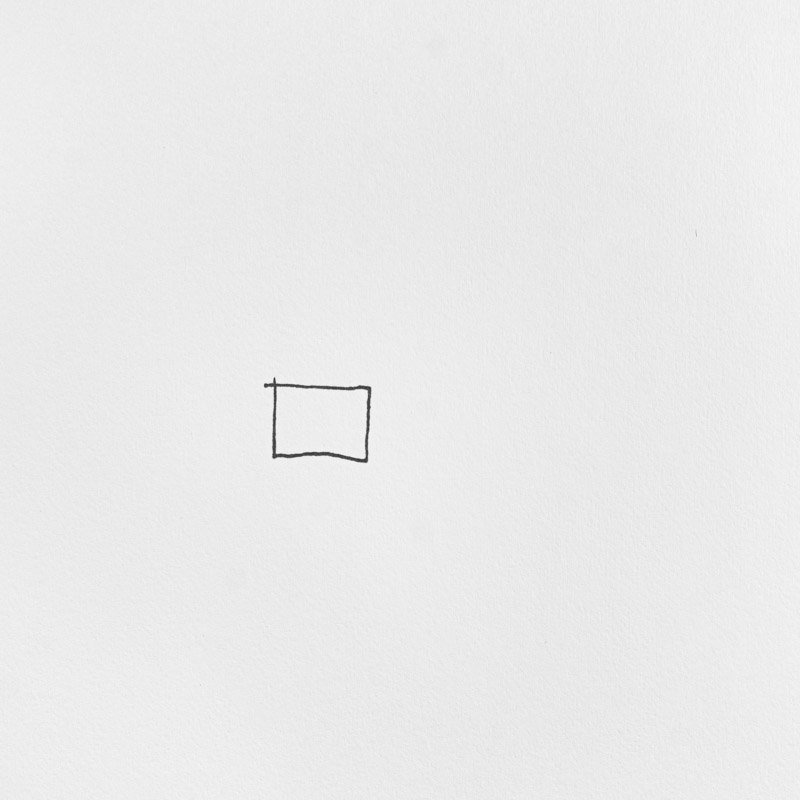
064

065

066

067

068 - "Lonesome Blot"
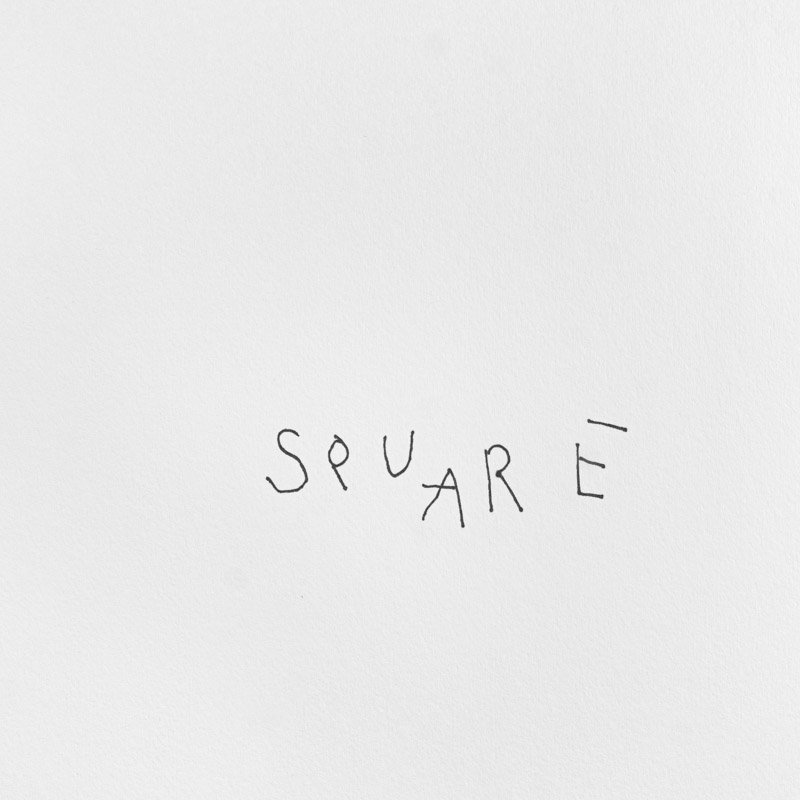
069 - "Linguistic"
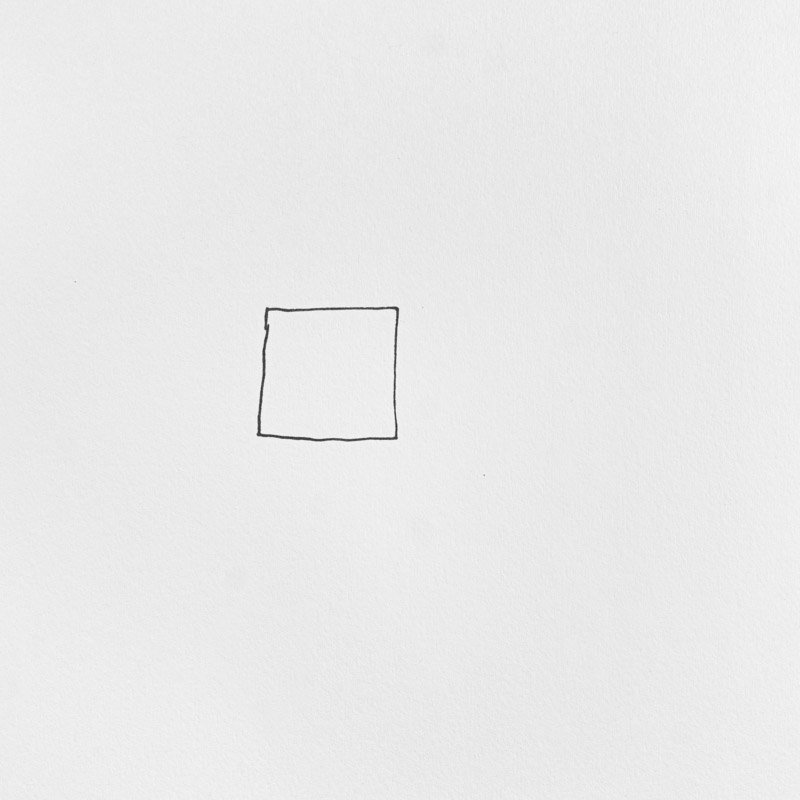
070
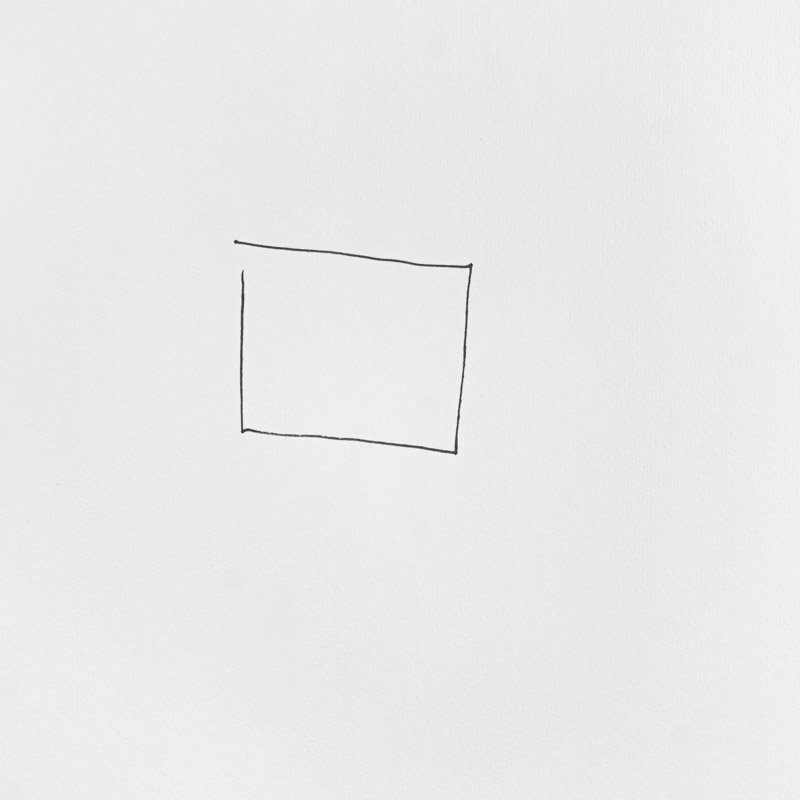
071

072

073

074

075

076

077

078

079
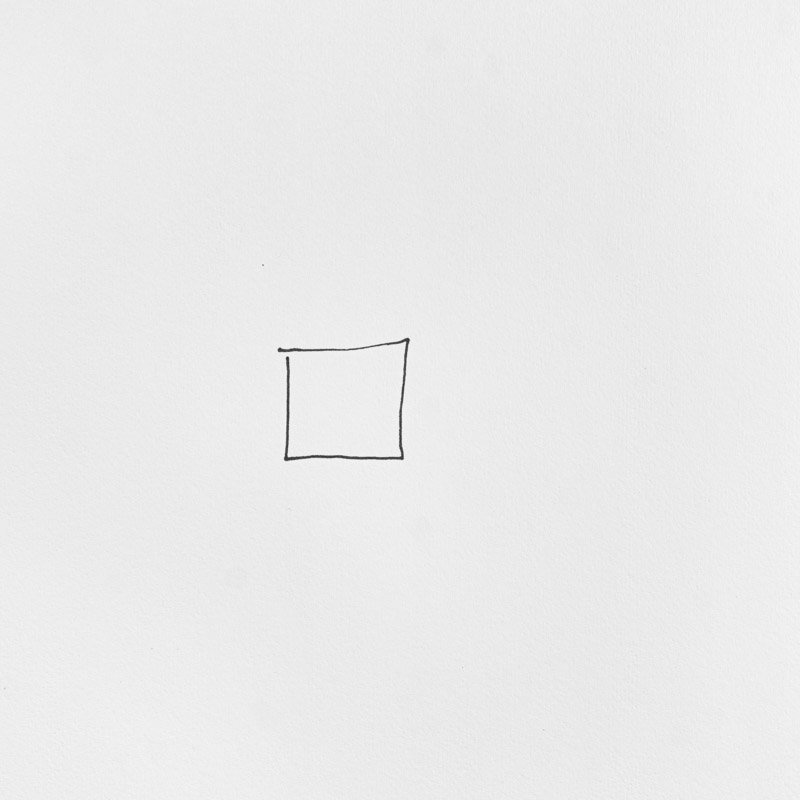
080
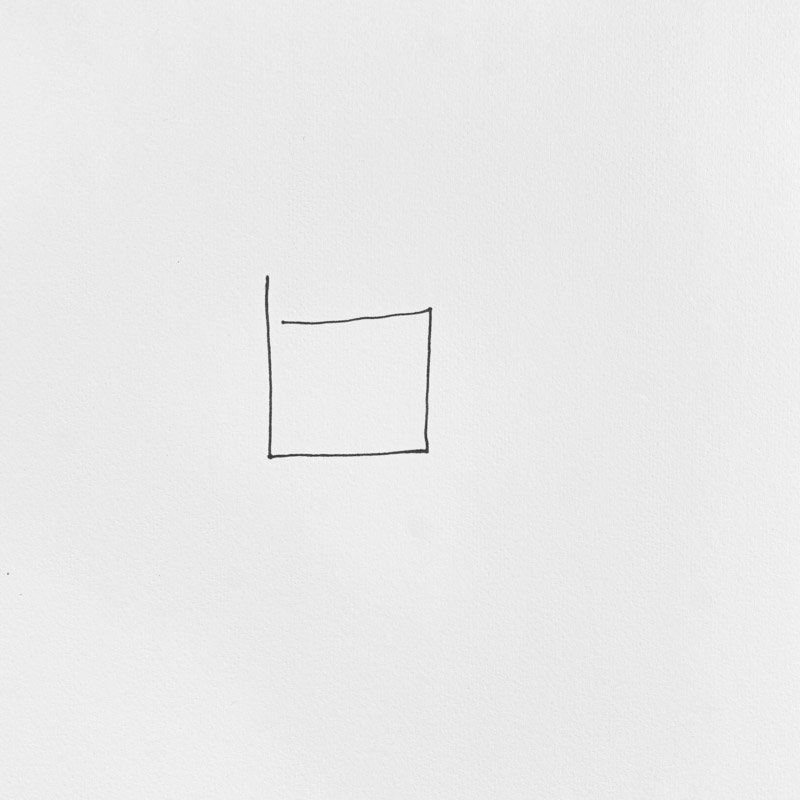
081
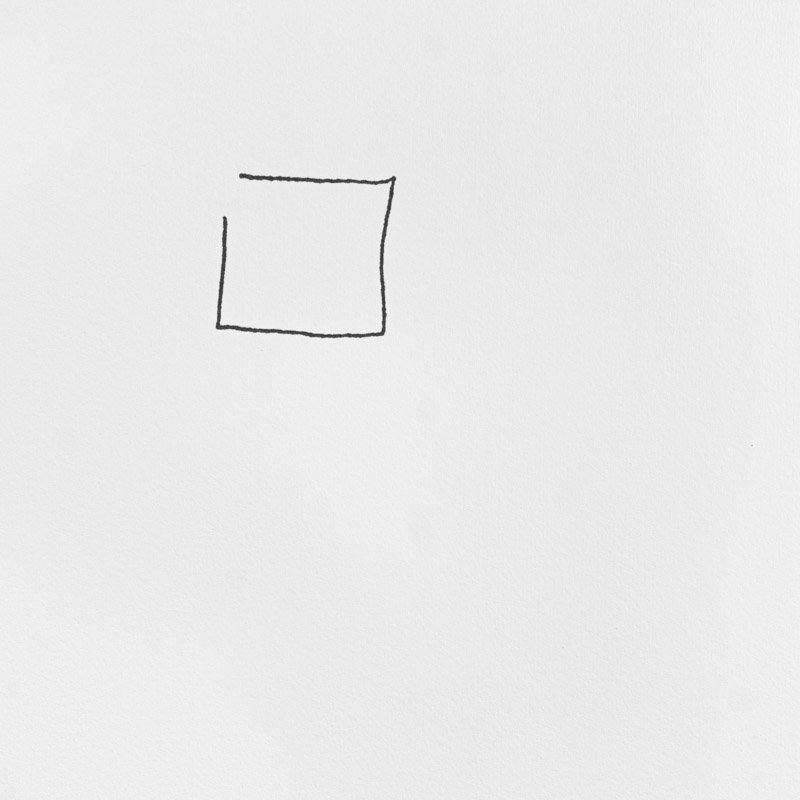
082

083

084

085
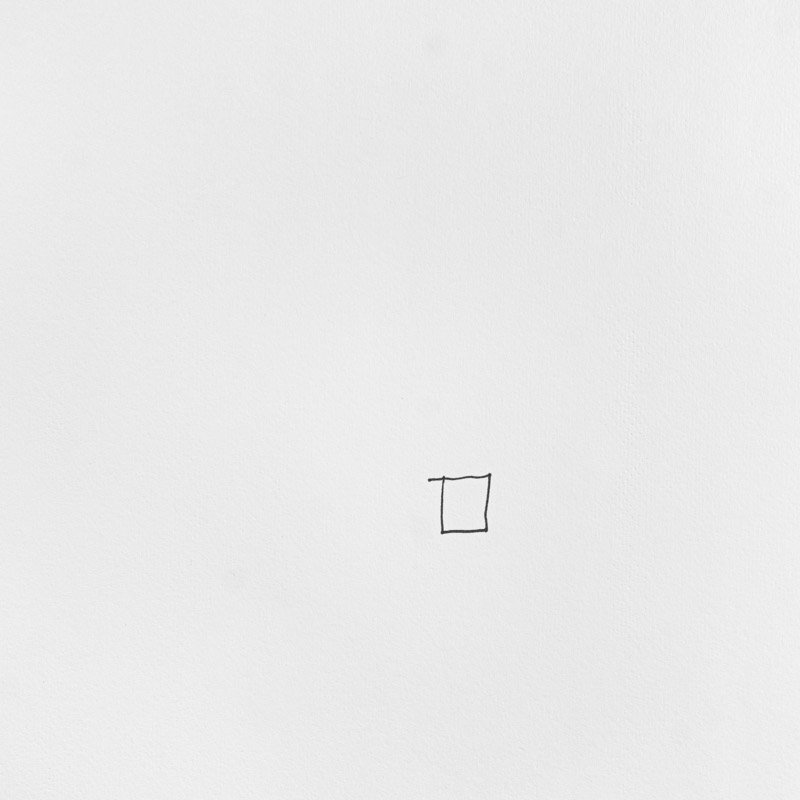
086
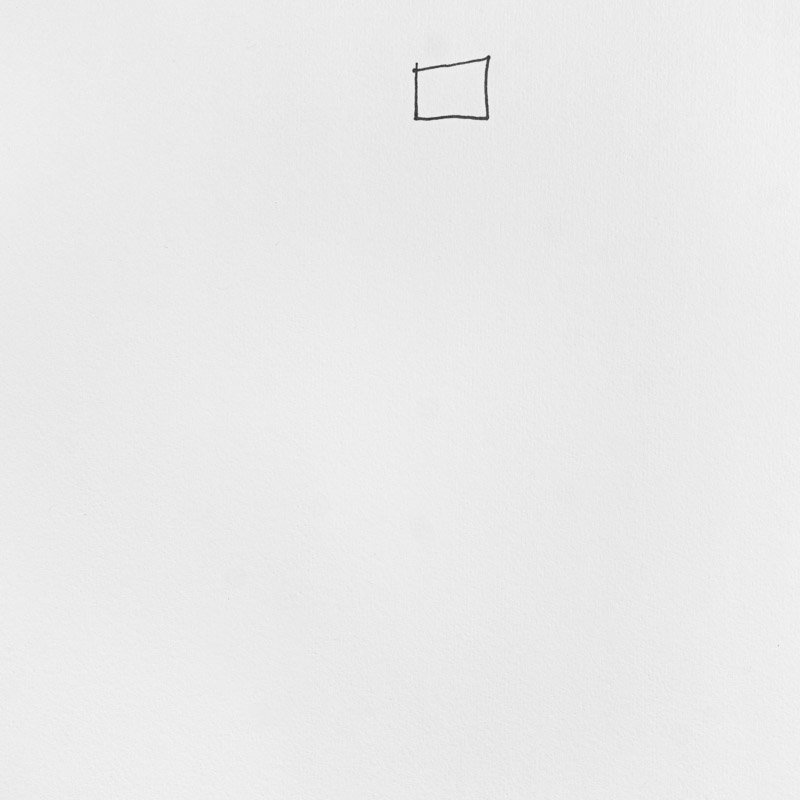
087
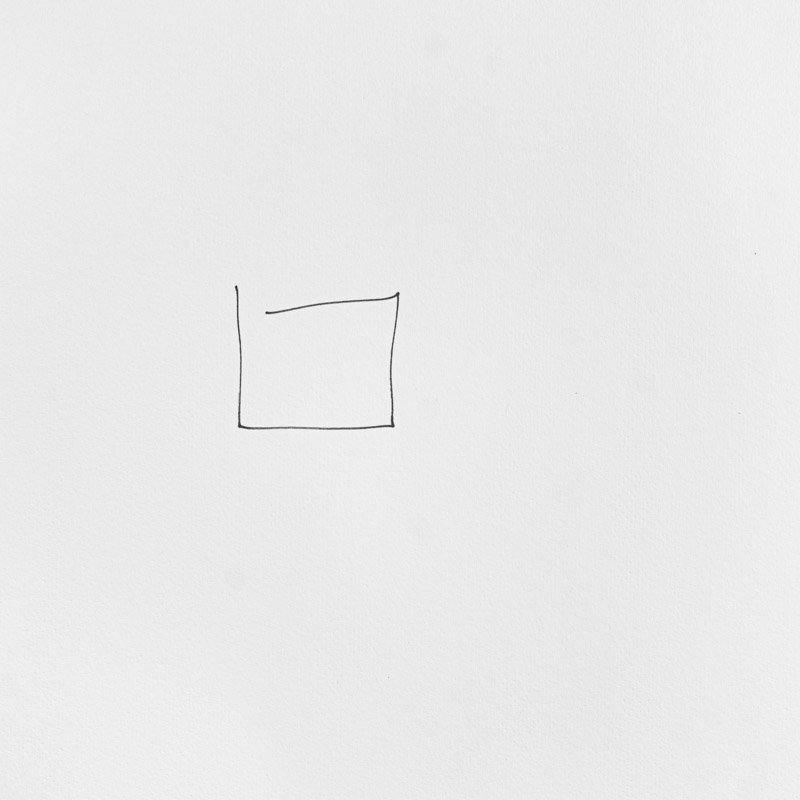
088

089

090
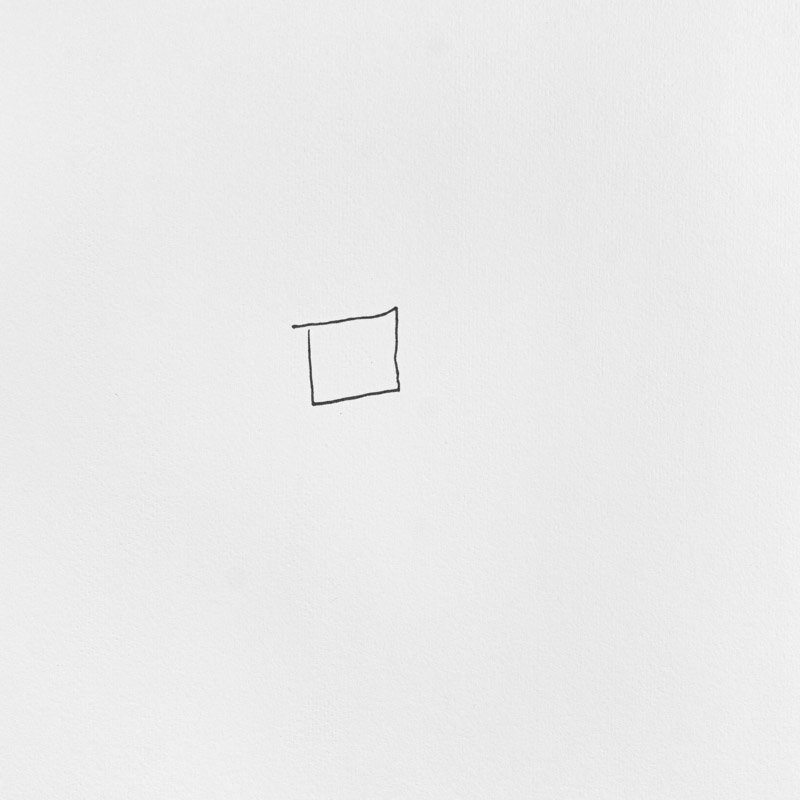
091

092

093
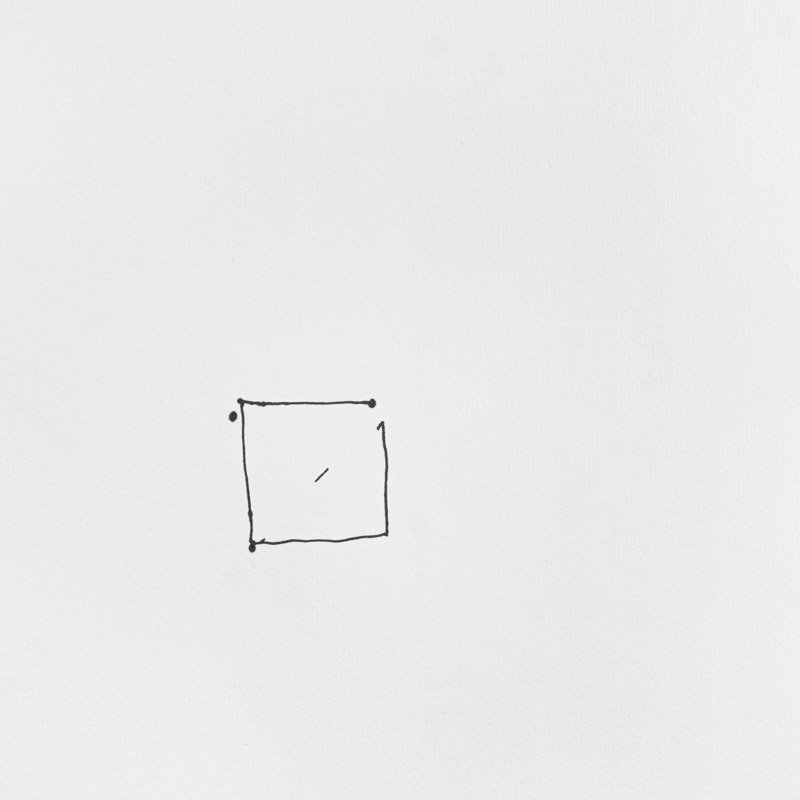
094

095

096

097

098

099

100 - "Eyes Opened"
“100 Consecutive Attempts at Drawing a Square on One Sheet of Paper (with Eyes Closed)” Completed in one sitting after the original 100 drawings. Same patterns seem to emerge. Lots of openings, crosses, and hangers. Not a ton of dangle hangers though.
Visit the 100 Attempts at Drawing a Square with Eyes Closed Collection on OpenSea
NFT’s available for Minting/Purchase SOON!


